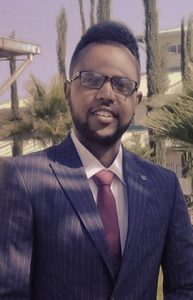[ad_1]
For roughly two decades we have been discussing the need for free access to commercially attractive spectrum in order to support new services and to expand the capacity and reach of existing wireless systems—particularly in rural and underserved areas.
Today, this old topic is getting new life, with a greater spotlight on the digital divide, which highlights this gulf that exists between those who have ready access to computers and the internet, and those who do not. Could a new framework bring a mature concept back to the forefront: white space?
First, a bit of background. Frequency spectrum is allocated often for specific uses; but not all of it is occupied for 100% of the time. At its core, white space is the term used to refer to unused frequency spectrum. Some white spaces are the result of the conversion of TV from analog signals to digital, which freed up a significant portion of spectrum.
Nearly 20 years ago, here in the states, Dell, HP, Intel, Microsoft, and Philips approached the FCC (Federal Communications Commission) to make more license-exempt spectrum available at frequencies less than 1 GHz. This helped lead to a notice of proposed rulemaking regarding the unlicensed use of TV white spaces in 2004. A report and order were approved allowing unlicensed use of TV band spectrum in 2008, and the final rules for unlicensed operation in the TV broadcast bands were released in February 2009.
Jump forward to today and let’s take a look at this topic from a more global perspective. Last week, the DSA (Dynamic Spectrum Alliance) complimented the Communications Authority of Kenya’s decision to approve the framework authorizing the use of a TVWS (TV White Space). The framework will play a key role in meeting the broadband penetration goals set in the Authority’s Strategic Plan (2018–2023).
The hope is it will address the need for increased capacity demands, especially in rural, underserved areas. The TVWS framework will allow lightly licensed white space devices to operate at locations where UHF (ultra-high frequency) bands are not in use by licensed services, while protecting primary users from receiving harmful interference, and will serve as a flexible way to make efficient use of spectrum.
Here is what is really exciting about this. It opens up new opportunities in Kenya. Think of how connectivity in rural areas—amid a pandemic—might be able to help with things like emergency response. Think of how the IoT (Internet of Things) and AI (artificial intelligence) can help with things like smart ag. The opportunities are endless. As we are quickly seeing this is all about connecting the unconnected—and bringing us a little bit closer to addressing the digital divide. This is only the beginning. We can do so much more here in the states and abroad.
Want to tweet about this article? Use hashtags #IoT #sustainability #AI #5G #cloud #edge #futureofwork #digitaltransformation #green #ecosystem #environmental #circularworld
[ad_2]







